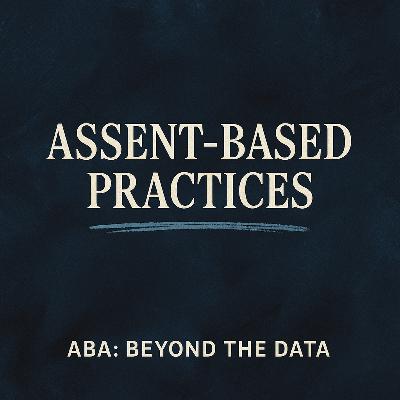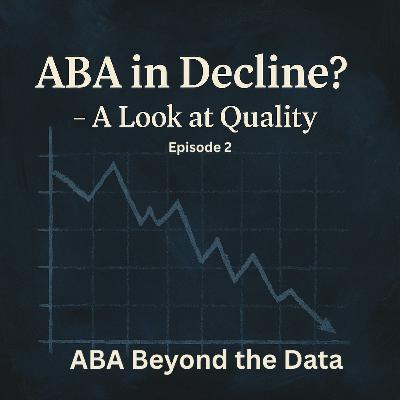Assent Based Practices
Description
To buy the CEU for only $7 go to:
https://www.aba-ceus.com/get-ceus/p/episode-1-ceu
In this episode of ABA Beyond the Data, I, Jay Burton—BCBA and proud parent of two incredible boys on the autism spectrum—take a deep dive into one of the most important and often misunderstood concepts in our field: assent.
We start by breaking down what assent really means. Consent is legal and informed; assent is the learner’s active “yes.” It’s not passive silence, and it can be withdrawn at any time. Recognizing assent and dissent is essential, especially for our learners who may communicate non-vocally. Leaning in, smiling, or reaching for materials may show assent, while turning away, pushing items aside, or hiding under the table may signal dissent.
I share openly about my own journey as a clinician and as a dad. For too long, I was a “follow through no matter what” BCBA, and I saw how that damaged my relationship with my older son. When I shifted to assent-based practices, the trust that grew between us was undeniable. With my younger son, who has only known an assent-based approach, our relationship looks completely different—there’s less conflict and more connection.
We also cover what to do when assent is withdrawn. Sometimes you don’t re-present the task, sometimes you re-present later, and sometimes you modify the conditions. I share the story of my son Lucas saying “no” to shoes—a breakthrough early word that I happily honored, because teaching our kids the power of their own voice matters more than compliance.
Of course, there are moments when assent can’t be the deciding factor. Safety, health, and dignity always override. Crossing the street, getting medical care, or basic hygiene like brushing teeth—these are not optional. But even in non-negotiable situations, we can build in choice and dignity by offering flexibility and respecting the learner’s voice where possible.
At the heart of this episode is a message of growth and honesty. Assent isn’t just ethical, it’s humane. It builds trust, reduces coercion, and teaches lifelong skills of choice and advocacy. And yes—sometimes dissent looks like hiding under a table with a Pop-Tart. Don’t call it an extinction burst; call it a Yelp review.
If you’d like to earn CEUs for this episode, head to ABA-CEUS.com, answer three quick questions, and you’ll get credit.
📚 Sources Cited
Breaux, R. P., & Smith, T. (2023). Moving beyond compliance: Assent-based practice in applied behavior analysis. Behavior Analysis in Practice.
Behavior Analyst Certification Board (BACB). (2020). Ethics Code for Behavior Analysts. Littleton, CO: BACB.
United Nations. (2006). Convention on the Rights of Persons with Disabilities (CRPD).








